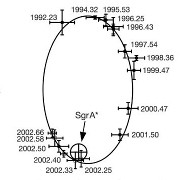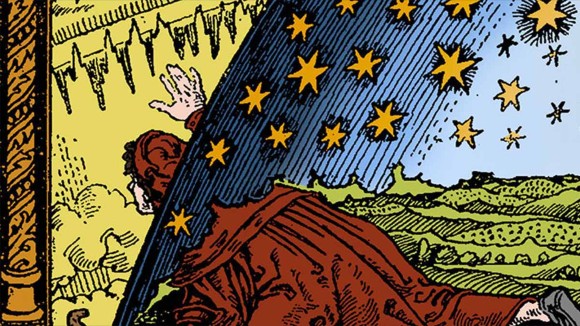The abstract mathematical concepts of Albert Einstein’s and Karl Schwarzschild’s ‘point masses’, formulated in the early 20th century, were slowly transformed into the astronomical concept of black holes by some of the world’s greatest physicists. Arthur Eddington commented on the fact that these black holes would not emit any light, so would not have a spectrum. Space-time would curve around these objects. Subrahmanyan Chandrasekhar calculated that bodies above a certain mass threshold would collapse to form black holes, and Freeman Dyson and Andrew Lenard proved that atoms could only be compressed to a certain extent, leading to the determination that neutron stars above this Chandrasekhar limit could exist due to the Pauli exclusion principle.
Our understanding of the more detailed properties of black holes was developed during the latter half of the 20th century. In Nature, Stephen Hawking completed his analogy of black hole physics to the laws of thermodynamics. He showed that black holes could emit radiation (later called “Hawking radiation”) in accordance with its surface gravity (Hawking 1974). Working with colleague Gary Gibbons, Hawking found indirect observational evidence for black holes by considering short-period binary systems with eccentricities (Gibbons & Hawking 1971). In a typical short-period binary system any initial eccentricity would be rapidly dissipated by tidal friction or magnetic breaking. However, in a short-period binary containing a black hole, tidal dissipation only acts on the stellar partner, meaning that any eccentricity in the system is long-lived, and thus potentially observable.
 Most of the black holes we know of fit into one of two mass regimes: stellar mass black holes, on the order of five to tens of solar masses, and supermassive black holes (SMBHs), on the order of 0.1-1,000 million solar masses. SMBHs exist at the centre of most, if not all, galaxies. Our Galaxy is no exception: Rainer Schödel and collaborators, writing in Nature, showed unequivocally that the Milky Way is host to a SMBH of nearly 4 million solar masses, in the region known as Sagittarius A* (Schödel et al. 2002). Rainer Schödel and his team followed the motion of a star around Sgr A*, finding it on a highly elliptical keplerian orbit. However, in general, should a star pass too close to a SMBH, Martin Rees laid out what would be the fate of that star: total engulfment or tidal disruption (Rees 1988). These tidal disruption events can be extremely energetic, radiating more energy than supernova explosions. Only a dozen or so have been observed to date.
Most of the black holes we know of fit into one of two mass regimes: stellar mass black holes, on the order of five to tens of solar masses, and supermassive black holes (SMBHs), on the order of 0.1-1,000 million solar masses. SMBHs exist at the centre of most, if not all, galaxies. Our Galaxy is no exception: Rainer Schödel and collaborators, writing in Nature, showed unequivocally that the Milky Way is host to a SMBH of nearly 4 million solar masses, in the region known as Sagittarius A* (Schödel et al. 2002). Rainer Schödel and his team followed the motion of a star around Sgr A*, finding it on a highly elliptical keplerian orbit. However, in general, should a star pass too close to a SMBH, Martin Rees laid out what would be the fate of that star: total engulfment or tidal disruption (Rees 1988). These tidal disruption events can be extremely energetic, radiating more energy than supernova explosions. Only a dozen or so have been observed to date.
A phenomenon thought to be related to that of black holes is that of the short gamma-ray burst (GRB). One of the first connections between black holes and short GRBs was made in Nature by Neil Gehrels and colleagues (Gehrels et al. 2005). They managed to localise the origin of a short GRB to a luminous elliptical galaxy, exactly where one would expect a black hole–neutron star binary merger to occur, and conversely, where a supernova explosion (the origin of long GRBs) would be very unlikely. The link between short GRBs and stellar-mass black hole mergers was strengthened in 2013 when Nial Tanvir reported observations of a ‘kilonova’ associated with a GRB (Tanvir et al. 2013). A kilonova is a faint transient event resulting from the decay of neutron-rich radioactive species, which results from the merger of two compact objects: neutron stars or a neutron star–black hole pair.

